|
Green Mango Anthracothorax viridis Zumbador Verde,
|
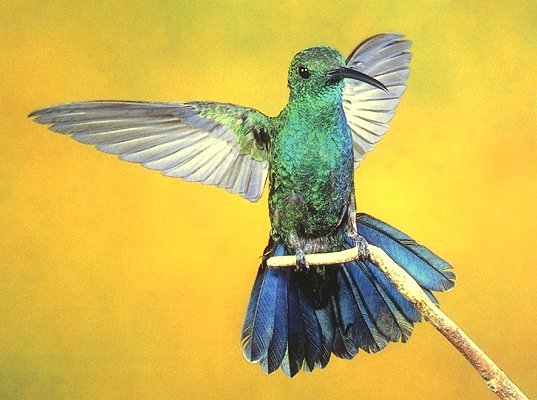 |
|
Photo: R. & E. Tyrrell*
|
|
Green Mango Anthracothorax viridis Zumbador Verde,
|
 |
|
Photo: R. & E. Tyrrell*
|
|
IDENTIFICATION: A large hummingbird with a curved bill. Both sexes are green above and below, with a bluish tail. The intensity of the color depends on the light angle. Length: 11-12 cm.; weight: 6.6-7.2 g. VOICE: A low-pitched twitter. Audio (R. Rodríguez Mojica). HABITAT: Forests, coffee plantations, and forest edges in mountains and foothills. HABITS: Feeds mainly on insects (such as beetles, flies, lantern flies), spiders, and flower nectar. It sometimes flycatches insects in mid-air, but more typically gleans insects from leaves and bark. Like the Puerto Rican Emerald, the Mango sometimes "robs" nectar from flowers by piercing them at the base, rather than probing the flower past the stamen. Individual Mangos will aggressively fight off rival hummingbirds from prized food sources, like African tulip trees. Hummingbirds can see light in the ultraviolet range of the spectrum, which allows them to detect patterns in flowers that are invisible to the human eye. The tiny, cup-shaped nest is made of plant fibers, covered with lichen, typically placed on a tree limb much higher than nests of other hummingbirds in Puerto Rico. The female lays two white eggs. Although the female does all the incubation and caring for the young, the male often stands guard on a neighboring branch while the female incubates. STATUS AND CONSERVATION: Common in appropriate mountain habitat where it basically replaces the Antillean Mango of the lowlands. RANGE: One of 14 species of endemic birds that only occur in Puerto Rico, it is the common large hummingbird in the central and western mountains. Typical sites to find this species are the grounds of the parador, Hacienda Juanita, near Maricao; Hacienda Gripiñas in Jayuya; along PR 186 in Caribbean National Forest, and other locations in the central mountains of Puerto Rico. TAXONOMY: TROCHILIDAE; Trochilinae |
 |
|
Photo: G. Lasley
|
 |
|
Photo: A. Iñigo
|
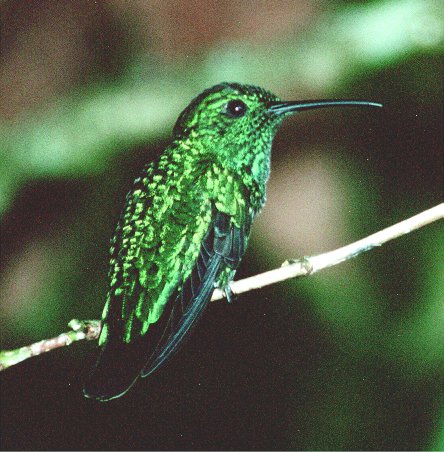 |
|
Photo: L. Miranda
|
 |
|
Photo: G. Lasley
|
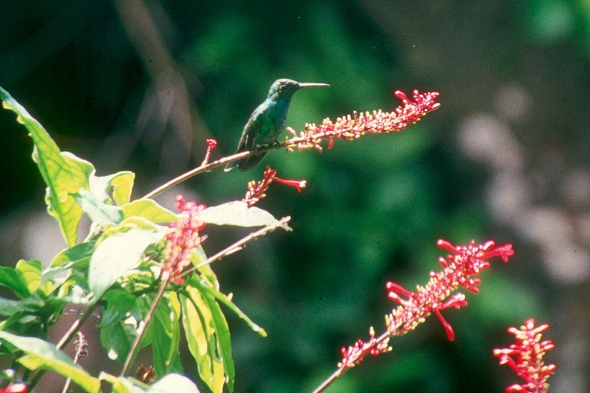 |
|
Photo: D. North
|
 |
|
Photo: R. Rodríguez Mojica
|
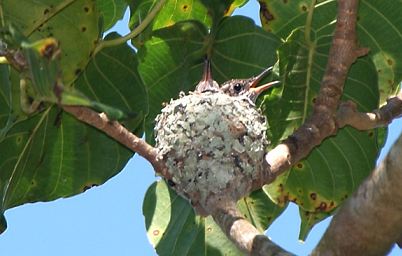 |
|
Photo: R. Rodríguez Mojica
|
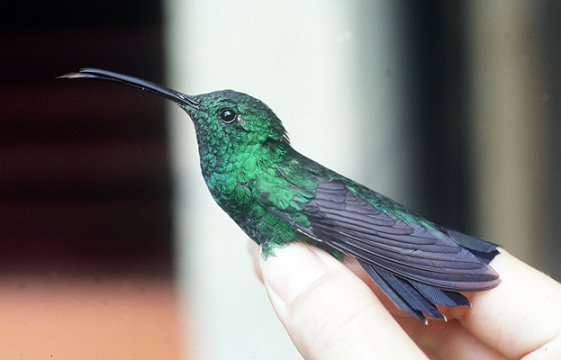 |
|
Photo: J. Faaborg*
|
|
References del Hoyo, J., A. Elliott, and J. Sargatal, eds. 1999. Handbook of the Birds of the World, Vol. 5. Barn Owls to Hummingbirds. Lynx Edicions, Barcelona. Gerwin, J. A., and R. M. Zink. 1998. Phylogenetic patterns in the Trochilidae. Auk 115: 05-118. Raffaele, H.A. 1989. A guide to the birds of Puerto Rico and the Virgin Islands. Princeton. Raffaele, H.A. 1989. Una guía a las aves de Puerto Rico y las Islas Vírgenes. Publishing Resources, Inc., Santurce, PR. Raffaele, H.A., J.W. Wiley, O.H. Garrido, A.R. Keith, and J.I. Raffaele. 1998. Guide to the birds of the West Indies. Princeton. Tyrrell, E.Q. and R.A.Tyrrell. 1990. Hummingbirds of the Caribbean. Crown Publishers, NY. Wunderle, J.M., A. Díaz, L. Velasquez, and R. Scharrón. 1987. Forest openings and the distribution of understory birds in a Puerto Rican rainforest. Wilson Bull. 99:22-37. Next endemic species in taxonomic order Previous endemic species in taxonomic order |